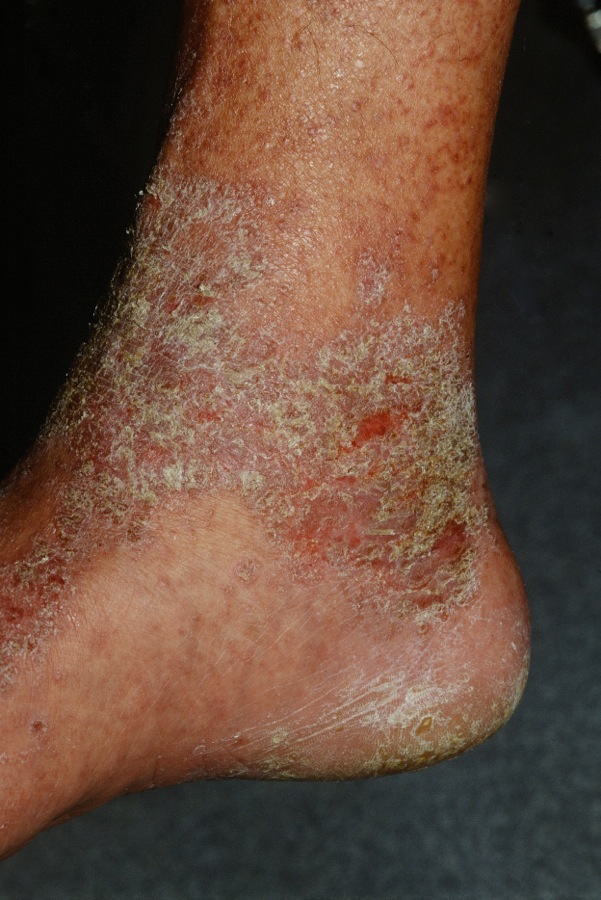
A red, scaly rash with pitting edema on the lower leg of an elderly person.

A red, scaly rash with pitting edema on the lower leg of an elderly person.
Stasis dermatitis (SD) represents an inflammatory rash of the lower legs in the setting of leg swelling and poor circulation.
The skin about the inner ankle is red and scaly. These changes may extend up the lower leg to the knee. Edema is always present and may be severe. Varicosities may be seen about the lower leg. An ankle flare may be present. Over time, the skin may take on a brownish discoloration due to hemosiderin deposition. In chronic and/or severe cases, ulceration may occur.
Lower extremity cellulitis is more likely if there is asymmetry (one sided), tachycardia, leukocytosis (i.e. WBC > 10,000), tachycardia (pulse > 90) and age > 70 .
Stemmer's test results in either a positive or negative sign for lymphedema. To perform it, try to pinch and lift a skinfold at the base of the second toe or middle finger. If you can pinch and lift the skin, Stemmer's sign is negative. If you can't, the sign is positive. False positives never occur. On the other hand, a negative test doesn't rule out lymphedema.
Who is Dr. White? | Privacy Policy | FAQs | Use of Images | Contact Dr. White